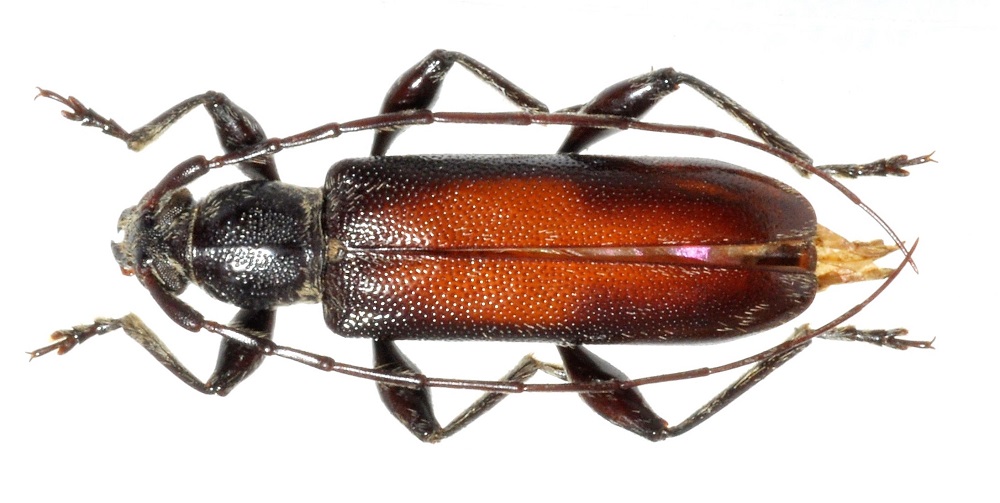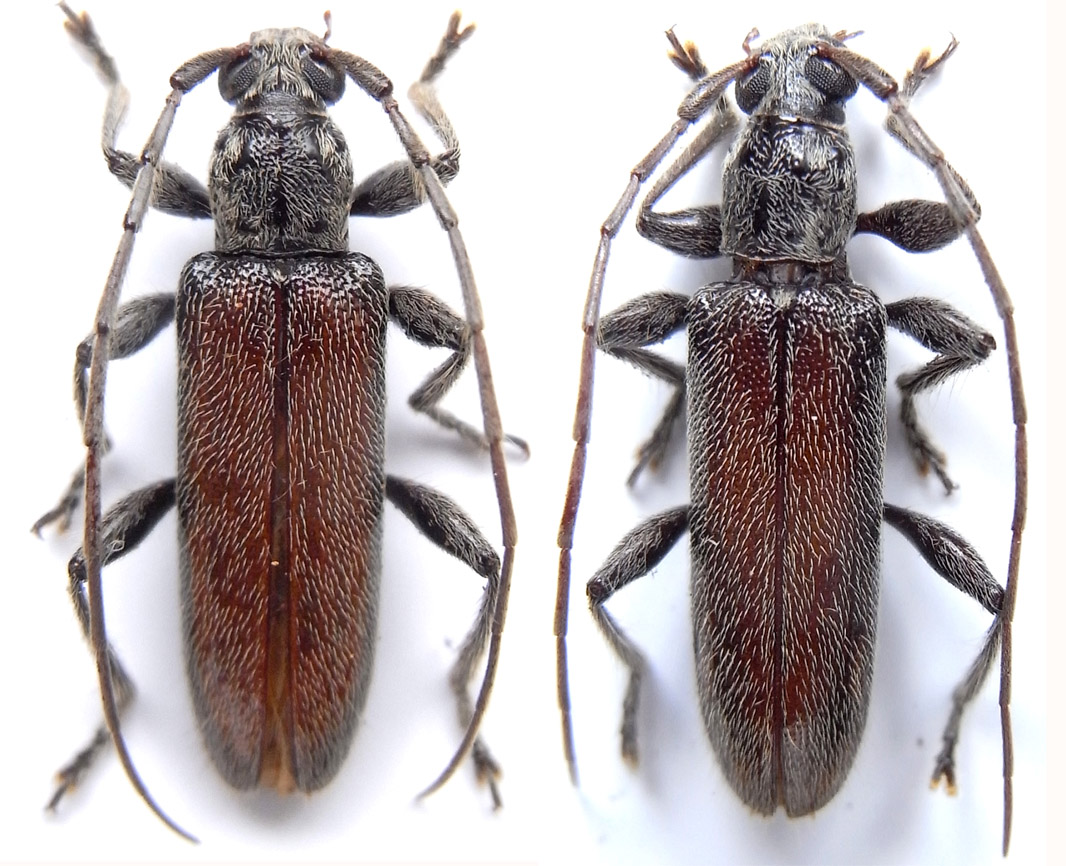| T O P I C R E V I E W |
| Pierre |
Posted - 16/11/2017 : 21:56:00

156.39 KB
Ceresium ase a difficult chapter. No idea for this one: 14mm, from Mindanao. Body blackish dark brown, with this reddish brown spot un elytrae. Could this be an immature specimen?
The beetle seems to have lost a good part of it's pilosity which must have been present on the entire surface of the elytrae like many other Ceresium. |
| 4 L A T E S T R E P L I E S (Newest First) |
| Pierre |
Posted - 18/11/2017 : 11:22:48
You might be right. - Nevertheless if your beetles seem to show a fourth joint slightly shorter than the third, mine has these joints of exactly the same lenght (2mm). In addition to this (and this fact remembers a recent discussion on an other species), I really wonder how a beetle is able to rub down it's pilosity on the entire body, including antennae and almost all leg and foot parts, in an almost perfect symmetrical way... |
| Xavier |
Posted - 18/11/2017 : 10:29:18

280.82 KB
Those 2 specimens are from Mindanao. I called them Ceresium raripilum Newman, 1842 but I have not the original description neither the holotype picture. You specimen looks the same, with less hairs. |
| Pierre |
Posted - 18/11/2017 : 09:19:04
By reading Hüdepohl's text, C. raripilum has 3rd joint as long as scapus (o.k.), 1/4 longer than the 4th (??), pronotum coarsely, shallowly, densly punctate (??) without smooth median area (my beetle has such an area). |
| Xavier |
Posted - 17/11/2017 : 08:12:24
The closets species is Ceresium raripilum Newman, 1842, but I do not know all species from Philippines. |
|
|


